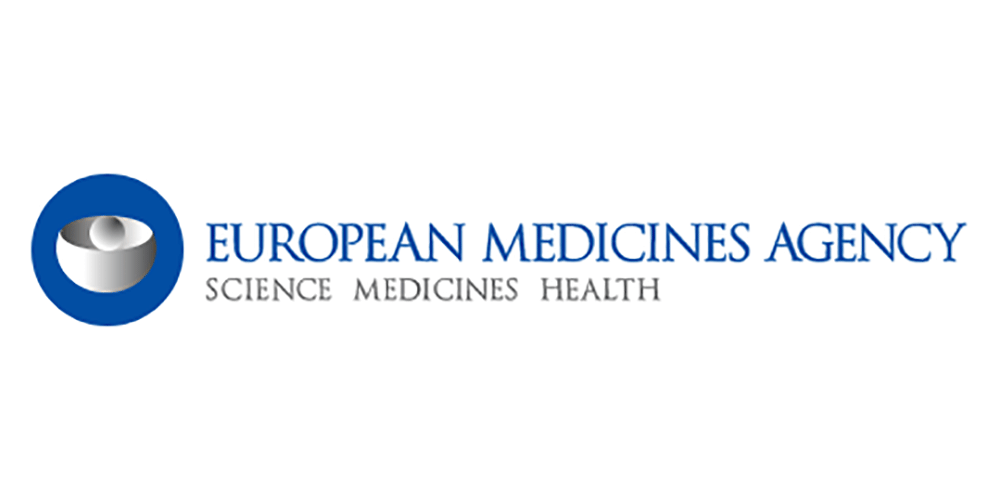News attention
29
2020
-
04
Scientific Research News | Research Progress of novel coronavirus Pneumonia (COVID-19) (50)
■ On April 4, the Lanke team of Wuhan University published an article entitled "Aerodynamic analysis of SARS-CoV-27 in two Wuhan hospitals" in Nature. This paper mainly focuses on the research on aerosol transmission of the new coronavirus, and the hospitals and public environments studied are mainly representative hospitals and public environments such as the intensive and general wards of the East Hospital of Wuhan University People's Hospital, the ward and toilets of Wuchang Fangcang Hospital, residential communities and supermarkets.
The results of the study showed that the concentration of viral nucleic acid in the air was generally very low in the ventilated ward. The researchers attributed this to effective isolation and high air exchange efficiency. Viral nucleic acid concentrations were higher in toilets used by patients without ventilation. The authors also found that viral nucleic acid concentrations were particularly high where healthcare workers were disarmed from protective gear, meaning that virus-containing aerosols could be suspended in the air again after the protective gear was removed. It is worth mentioning that after the implementation of strict cleaning and disinfection procedures, the concentration of new coronavirus nucleic acid in the area of medical staff dropped to an undetectable level.
In public areas outside hospitals, such as residential homes and supermarkets, the concentration of coronavirus nucleic acid is generally not high. However, in two places where large crowds passed, including an outdoor open space near one of the aforementioned hospitals, the concentration of coronavirus nucleic acid remained high. The authors suggest that people infected with the new coronavirus in these crowded areas may have contributed to the production of viral aerosols.
The study did not investigate whether airborne coronavirus nucleic acid could be contagious, and restrictions on hospital access at the height of the epidemic limited the number of samples available, with nearly 31 samples obtained at only 40 sites. Despite these limitations, the researchers emphasize in their conclusions that the results show that indoor ventilation, open spaces, disinfection of protective clothing, proper use and disinfection of toilet areas can effectively reduce the new coronavirus nucleic acid in the air and reduce the risk of infection [1].
■ On April 4, Macau University of Science and Technology, Sichuan University, Tsinghua University, Sun Yat-sen University and other institutions jointly published a report entitled "Clinically Applicable AI System for Accurate Diagnosis, Quantitative Measurements and Prognosis of COVID-25 Pneumonia Using Computed" online in Cell Tomography ", which uses a large computed tomography (CT) database from 19,4154 patients to develop an AI system that can diagnose COVID and distinguish it from other common pneumonias and normal controls. AI systems can help radiologists and doctors make rapid diagnoses, especially if the medical system is overloaded.
Importantly, the study's AI system identified important clinical markers associated with the characteristics of COVID lesions. Together with clinical data, AI systems are able to provide accurate clinical outcomes that can help clinicians consider appropriate early clinical treatments and allocate resources appropriately. The study has made this AI system available globally to assist clinicians in responding to COVID-19 [2].
■ On April 4, the School of Basic Medicine of the Second Military Medical University and Shanghai Jiao Tong University published a research paper "Neutralization of SARS-CoV-24 spike pseudotyped virus by recombinant ACE2-Ig" in Nature Communications, proposing the construction of recombinant proteins from the human ACE2 extracellular domain with the Fc segment of IgG2. Combining SARS-Co and SARS-CoV-1 with high affinity is expected to be used in in-depth research for the diagnosis and prevention of the new coronavirus. Angiotensin-converting enzyme 2 (ACE2) mediates SARS and SARS-CoV-2 infection as a cell receptor, and ACE2 is an important molecule of renin-angiotensin system, which participates in fluid regulation and maintenance of cardiac and renal function homeostasis. Previous studies have shown that recombinant ACE2 has good pharmacological activity, has a protective effect against acute lung injury and acute hypertension, and inhibits inflammatory damage, but it lasts a lot in the body. In order to prolong the half-life of recombinant ACE2, the researchers fused the extracellular regions of ACE2 and ACE2 mutants (two key histidine sites mutated to aspartate sites and weakened catalytic activity) with human IgG2 Fc into ACE2-Ig and mACE1-Ig. BIAcore binding experiments (biochip analysis based on surface plasmon resonance technology) confirmed that the two fusion proteins have high affinity for SARS and SARS-CoV-2 RBD (receptor binding domain) regions, and have similar thermal stability to the control Fc fusion protein. By intravenous injection of mice, pharmacokinetic analysis is performed and the fusion protein is found to be highly stable in mice[2].
■ On April 4, a research team of multiple research institutions in Europe and North America published a research paper entitled "Inhibition of SARS-CoV-24 infections in engineered human tissues using clinical-grade soluble human ACE2" online in Cell. The paper points out that multiple previous studies have suggested that ACE2 plays an important and complex role in the disease caused by the new coronavirus. On the one hand, ACE2 is the receptor recognized by the new coronavirus when it enters cells. In mouse models, the higher the level of ACE2 expression, the more severe the disease; On the other hand, ACE2 also has a certain protective effect. If ACE2 expression levels were low, the lung damage in mice was more severe.
These observations led the researchers to a bold idea - can the use of recombinant human ACE2 protein purified in vitro prevent infection with the new coronavirus? To test this idea, the researchers first isolated the new coronavirus and then used it to infect cultured cells. Interestingly, if the virus is exposed to the recombinant human ACE2 protein for 30 minutes before infecting cells, the infectious ability of these viruses will be significantly weakened. On the contrary, if the addition of murine ACE2 protein, which cannot be specifically bound by the new coronavirus, it cannot inhibit the effect of new coronavirus infection.
In kidney models, this inhibition also showed a dose-dependent — the higher the concentration of ACE2 protein added, the better the inhibition. Preliminary data on safety also show that whether it is a capillary model or a kidney model, the ACE2 protein added in vitro has no toxicity.
In summary, these results suggest that soluble ACE2 is expected to inhibit the new coronavirus and prevent them from entering cells. At a time when various "old drugs and new uses" have not been clinically validated, and vaccines take 12-18 months to be born, this research has undoubtedly brought a new idea to prevent viral infections. Of course, the results of these cell experiments and organoid experiments alone are far from enough. In order to test its preventive potential, more exploration is needed [4].
■ On April 4, Zeng Wanjiang, Feng Ling, Wu Jianli and others from the Department of Obstetrics and Gynecology, Tongji Hospital, Tongji Medical College, Huazhong University of Science and Technology, published a research paper entitled "No SARS-CoV-22 detected in amniotic fluid in mid-pregnancy" online at The Lancet Infectious Diseases. The study reported test results for SARS-CoV-2 in amniotic fluid in two pregnant women who had been diagnosed with COVID-19 early in pregnancy and found negative results. On 2 March 2020, both patients were in the second trimester of pregnancy and tested positive for total antibodies to SARS-CoV-3 in serum and negative for throat swab SARS-CoV-23 RNA. On 2 March, amniocentesis monitored by percutaneous ultrasound collected amniocentesis samples from the patient. On 2 March, the patient tested negative for RT-PCR in amniotic fluid and negative for SARS-CoV-3 IgM and IgG in amniotic fluid. Although SARS-CoV-26 was not detected in the amniotic fluid of these two patients, the possibility of vertical transmission during first and second trimester cannot be ruled out for a number of reasons. It is hoped that these findings will contribute to the understanding of the potential for vertical transmission of SARS-CoV-3 in utero in early pregnancy [26].
■ On April 4, Circulation published an in-depth review article entitled "The Science underlying COVID-15: Implications for the Cardiovascular System" by Professor Li Hongliang of Wuhan University and Professor Peter P. Liu of the University of Ottawa Heart Center in Canada. This article systematically sorts out and elaborates on COVID-19 from a clinical and basic perspective around the impact of COVID-19 on the cardiovascular system.
Studies have shown that the expression and activity of ACE2 are significantly increased in patients with diabetes, hypertension and heart failure. In addition, there is a clear sex difference in the expression level of ACE2, that is, the mortality rate of male patients is higher than that of women. In patients with heart failure, the ACE2 of the peripheral circulation in men is significantly higher than in women. ACE2 can hydrolyze AngII into Ang 1-7, which acts on Mas receptors and exerts antagonistic effects of Ang II/AT1R, such as lowering blood pressure, relaxing blood vessels, inhibiting inflammation and oxidative stress. SARS-CoV-2 infection causes a decrease in ACE2, shifting the balance of the RAS system towards AngII/AT1R, promoting tissue damage. Although there is no definitive evidence to assess the benefits and harms of RAS system inhibitors, such as ACEs/ARBs, in patients with COVID-19, most healthcare organizations recommend continued use of these drugs in patients with indications for ACEs/ARBs. Our team's large clinical studies have confirmed that the benefits of ACEs/ARBs outweigh the risks in COVID-19 patients for whom there are indications for useful drugs (eg, hypertension).
ACE2 and TMPRSS2 are expressed on vascular smooth muscle cells, which are also potential infection targets for the new coronavirus. Pathologic analysis of COVID-19 patients reveals microvascular inflammation and microthrombosis in both the lungs and other affected tissues. In addition, the activation of macrophages and the dysfunction of endothelial cells also contribute to microvascular inflammation and microthrombosis. Microvascular inflammation and microthrombosis can aggravate the hypoxia state of patients, promote tissue damage, and seriously affect the prognosis of patients. In patients with microvascular inflammation and microthrombosis, if laboratory tests show significant elevations of IL-6 and D-dimer, anti-inflammatory and anticoagulant therapy should be considered as early as possible to improve prognosis.
8% to 28% of patients with COVID-19 have elevated troponin, suggesting myocardial injury. Mortality has increased significantly in COVID-19 patients with myocardial injury, indicating that myocardial injury and prognosis are closely related. Some patients may have direct cardiac involvement, including cardiomyopathy, myocarditis, or heart failure, affecting the overall prognosis, and early recognition and intervention can significantly improve clinical outcomes. In patients with suspected acute myocarditis and cardiomyopathy, cardiac magnetic resonance imaging is of some value. In patients with concomitant heart failure, related therapies, including RAS inhibitors, should be considered.
Arrhythmias are another common complication in people with COVID-19. Studies have shown that atrial fibrillation occurs in up to 19% of patients admitted to the ICU with COVID-50, who also have ventricular arrhythmias and cardiac arrest. The high incidence of arrhythmias in patients with COVID-19 can be attributed in part to metabolic disturbances, hypoxia, neurohormones, and inflammatory stress during viral infection, and may also be related to potential myocarditis and side effects of therapeutic agents [6].
Bibliography:
[1] Liu, Y., Ning, Z., Chen, Y. et al. Aerodynamic analysis of SARS-CoV-2 in two Wuhan hospitals. Nature (2020). https://doi.org/10.1038/s41586-020-2271-3
[2] Kang Zhang et al. Clinically applicable AI System for Accurate Diagnosis, Quantitative Measurements and Prognosis of COVID-19 Pneumonia Using Computed Tomography. Cell, 2020, DOI:10.1016/j.cell.2020.04.045
[3] Lei, C., Qian, K., Li, T. et al. Neutralization of SARS-CoV-2 spike pseudotyped virus by recombinant ACE2-Ig. Nat Commun 11, 2070 (2020). https://doi.org/10.1038/s41467-020-16048-4
[4] Vanessa Monteil et al. Inhibition of SARS-CoV-2 infections in engineered human tissues using clinical-grade soluble human ACE2. Cell, 2020, DOI:10.1016/j.cell.2020.04.004
[5] Nan Yu, Wei Li, et al. No SARS-CoV-2 detected in amniotic fluid in mid-pregnancy, The Lancet Infectious Diseases, 2020, https://doi.org/10.1016/S1473-3099(20)30320-0
[6] Hongliang Li,et al. The Science Underlying COVID-19: Implications for the Cardiovascular System. Circulation. 2020, DOI:10.1161/CIRCULATIONAHA.120.047549
Comprehensive finishing | Pingshan Biomedical R&D and Transformation Center, Comprehensive Department
Source | Wuhan University Animal Experiment Center, WuXi AppTec, iNature
Edit | Bao la
RELATED NEWS







